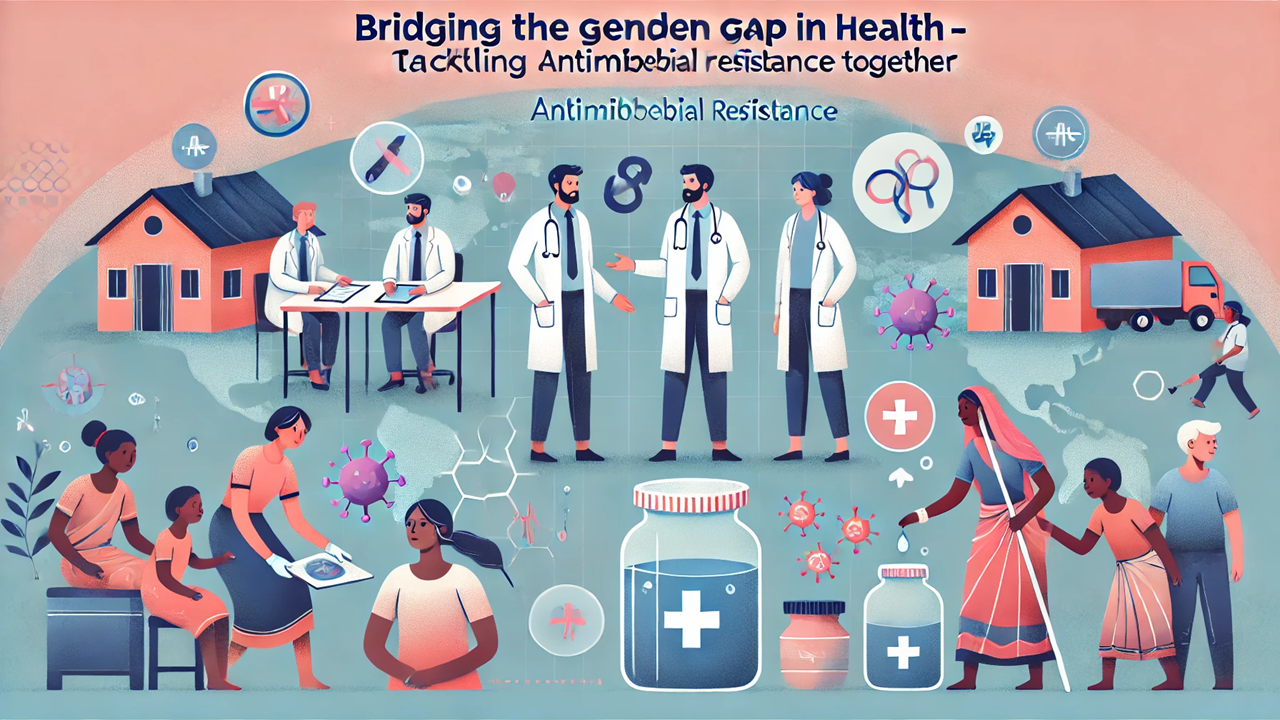Bridging the Gender Gap in Health: WHO’s Blueprint for Tackling Antimicrobial Resistance
The WHO’s new report, "Addressing Gender Inequalities in National Action Plans on Antimicrobial Resistance," highlights how gender-specific risks and barriers impact the fight against AMR. The report recommends targeted strategies that consider the unique challenges faced by men and women to create equitable healthcare systems. It calls for a comprehensive approach involving governance, data collection, prevention, and treatment to ensure that no one is left behind in the battle against antimicrobial resistance.

The fight against antimicrobial resistance (AMR) is taking a new turn with a fresh perspective introduced by the World Health Organization (WHO). In a detailed report titled "Addressing Gender Inequalities in National Action Plans on Antimicrobial Resistance: Guidance to Complement the People-Centred Approach," WHO highlights a critical issue that has been largely overlooked—gender disparities in AMR. As countries around the world develop National Action Plans (NAPs) to combat AMR, integrating gender-responsive strategies is not just an ethical imperative but a practical necessity to ensure equitable healthcare.
Understanding Gender-Specific Risks in Antimicrobial Resistance
The WHO report brings to light a stark reality: the risk of infection and response to treatment is influenced not just by biology but also by gender roles, norms, and social expectations. Women, for example, are more vulnerable to infections due to a combination of societal and biological factors. The lack of access to clean water and sanitation in both community settings and healthcare facilities puts women and girls at higher risk, especially during menstruation or childbirth. This risk is compounded by women’s role as primary caregivers, which often increases their exposure to healthcare settings and drug-resistant pathogens.
Men, on the other hand, are often overrepresented in high-risk occupations like industrial farming, animal husbandry, and food processing. These sectors expose men to antibiotics used in animal agriculture, contributing to higher chances of developing or spreading drug-resistant infections. Additionally, gender norms that portray men as the primary earners can delay their healthcare-seeking behavior, with many postponing medical visits until their condition worsens.
The WHO report emphasizes that addressing these gender-specific risks in AMR requires a targeted and context-specific approach. It recommends that policymakers develop strategies that consider gender differences in vulnerability and healthcare access to ensure that no group is disproportionately affected by AMR.
Breaking Down Barriers to Access and Treatment
Healthcare access is often fraught with gendered barriers. Women frequently encounter challenges such as a lack of financial autonomy, societal norms that restrict their mobility, and the burden of balancing multiple roles. These factors can delay women’s access to healthcare services and, in some cases, push them towards self-medication through informal markets—an issue that can lead to misuse of antibiotics and further drive antimicrobial resistance.
Men, influenced by traditional masculinity norms, might avoid seeking timely care, fearing that it could signal weakness. This mindset often leads to a delay in diagnosis and treatment, contributing to the spread of drug-resistant infections like tuberculosis.
The report also sheds light on biases within healthcare systems. Female patients, for instance, are more likely to receive antibiotic prescriptions compared to their male counterparts, even when their condition does not warrant it. Female healthcare workers, such as pharmacists, also face challenges, with their recommendations on antimicrobial use often dismissed more readily than those made by male colleagues.
These barriers highlight the urgent need for gender-sensitive training and awareness programs for healthcare professionals. The report urges governments and health institutions to adopt gender-responsive guidelines and policies that recognize and address these disparities.
Recommendations for Gender-Responsive Policies
To tackle these multifaceted issues, the WHO report provides 20 actionable recommendations structured around four key pillars: governance, surveillance, prevention, and treatment.
Governance and Leadership: Ensuring equal participation of women and men in AMR governance structures and integrating gender experts into decision-making bodies is essential. This would not only improve the inclusivity of AMR strategies but also help in tailoring interventions that cater to the needs of all genders.
Surveillance and Data Collection: The report calls for the systematic collection and analysis of sex- and gender-disaggregated data in AMR surveillance to identify trends and disparities. Without such data, it is challenging to pinpoint where the gaps lie and which groups are most at risk.
Prevention: Improving water, sanitation, and hygiene (WASH) infrastructure in both community settings and healthcare facilities is critical. This includes providing safe and private facilities for women and girls to manage menstrual hygiene, thereby reducing their risk of infection.
Treatment and Antimicrobial Use: The guidance emphasizes the need for gender analysis in regular prescription audits to detect unconscious biases in prescribing practices. The report also advocates for regulations to prevent over-the-counter sales of antimicrobials, while considering gendered barriers to formal healthcare access.
The Way Forward: A Comprehensive Gender-Responsive AMR Strategy
The WHO’s recommendations are not just theoretical; they come with a theory of change model that outlines the pathways for integrating gender into AMR strategies. This approach aims to reduce gender-related health inequities and ensure that NAPs are aligned with broader efforts to achieve health-related Sustainable Development Goals (SDGs).
By highlighting gender disparities and offering practical solutions, WHO’s report serves as a crucial resource for policymakers, healthcare professionals, and international organizations. Addressing these inequalities is not merely about ensuring fairness—it’s about building a robust and effective response to AMR that leaves no one behind.
As countries refine their AMR action plans, incorporating these recommendations will be key to creating a more equitable and resilient healthcare system. The fight against AMR cannot succeed without addressing the unique challenges faced by both men and women. Bridging the gender gap in healthcare is not just good policy—it’s essential for public health.
- FIRST PUBLISHED IN:
- Devdiscourse
ALSO READ
Juan Antonio Samaranch Jr. Advocates for Sport as Public Health Investment
New York Declares Public Health Threat Following EEE Fatality
Scandal Unveiled: NYC Public Health Official's Secret Gatherings Revealed
India Leads the Way in Integrating Climate Change into Public Health Policies
CHS conclave highlighted intertwined crisis of climate change, public health: Union health secretary










